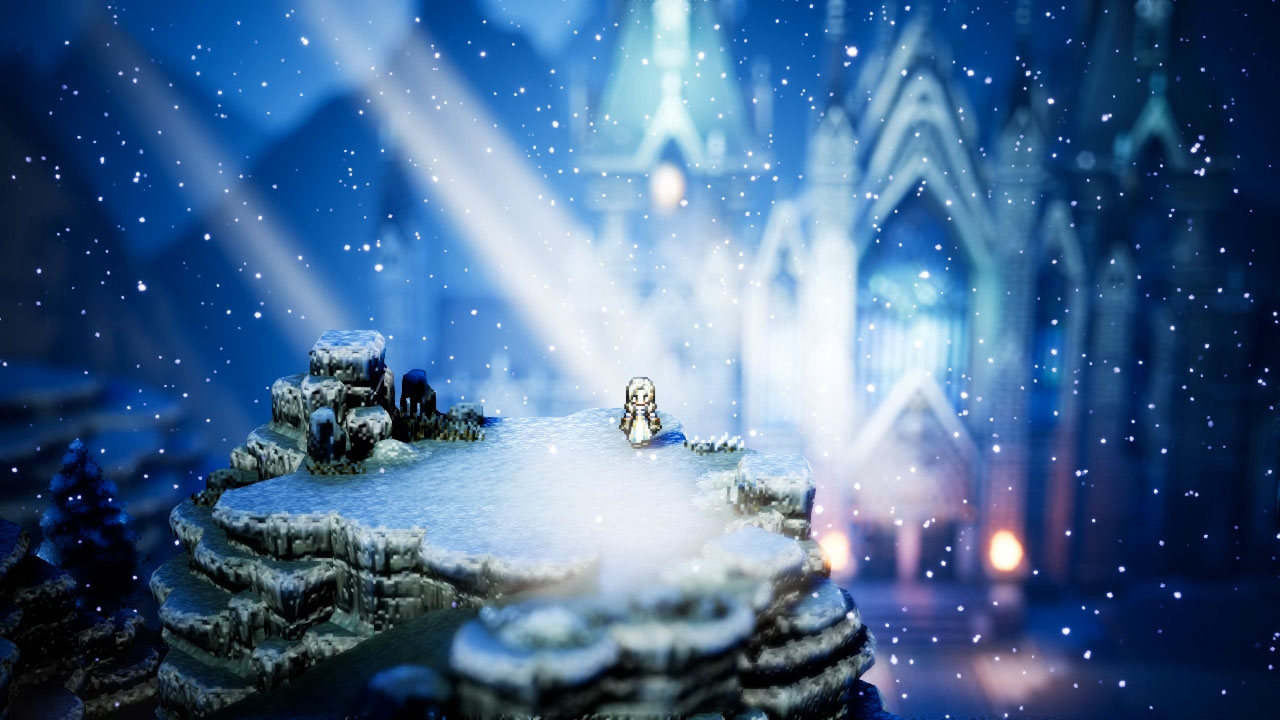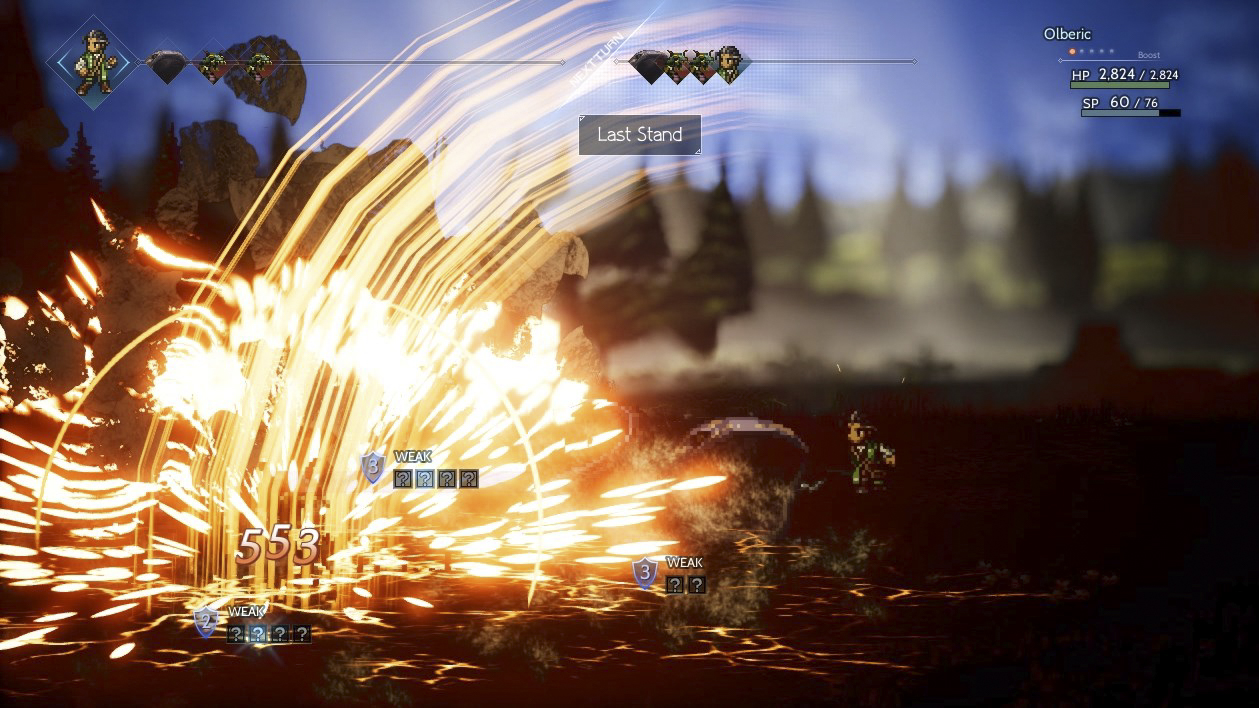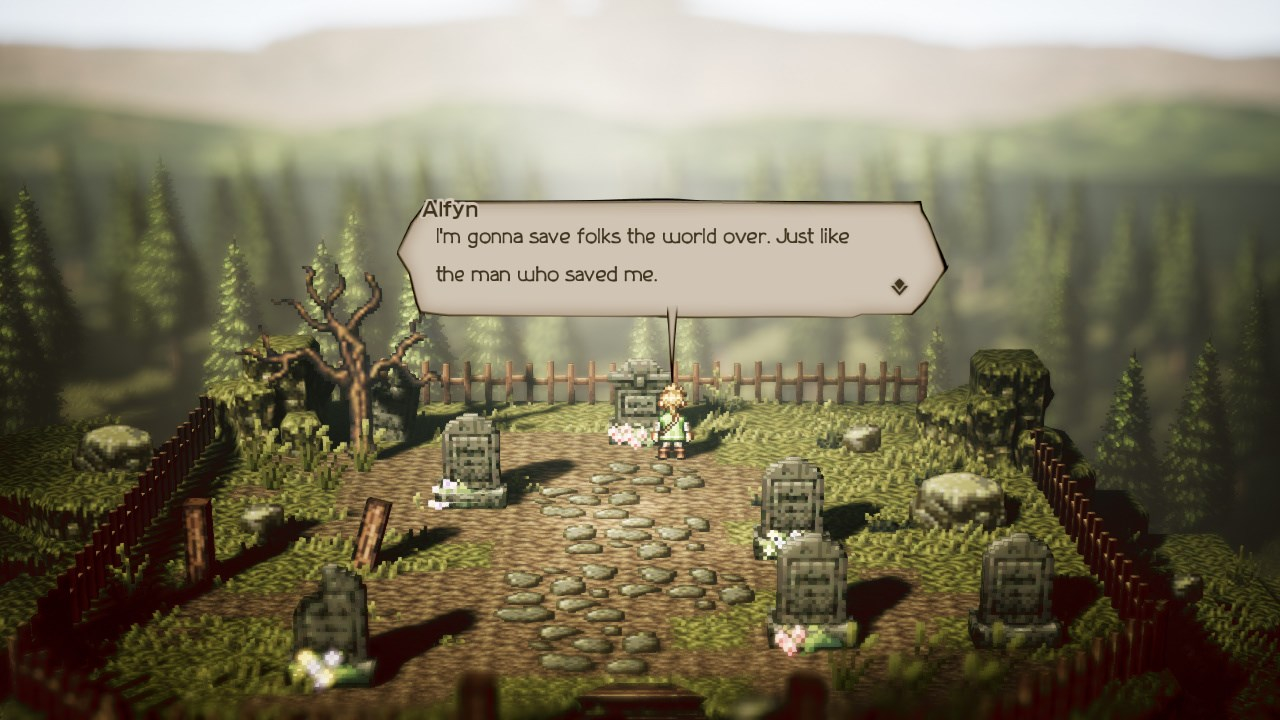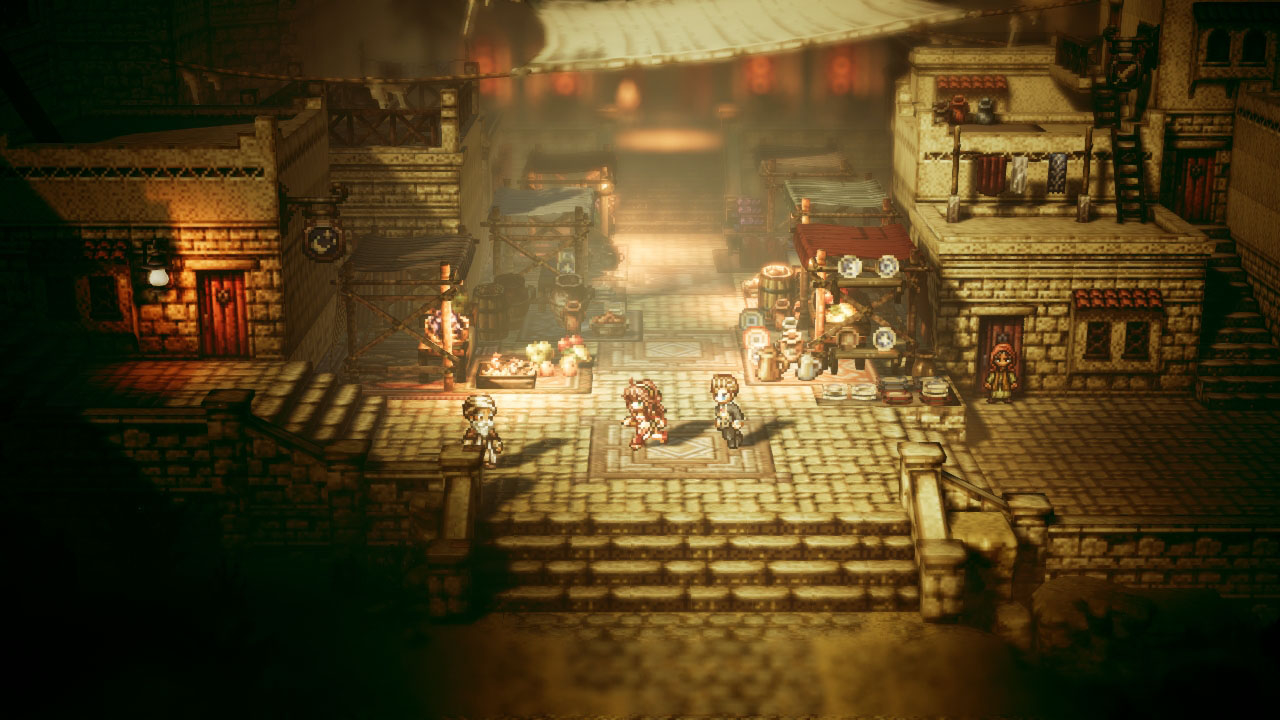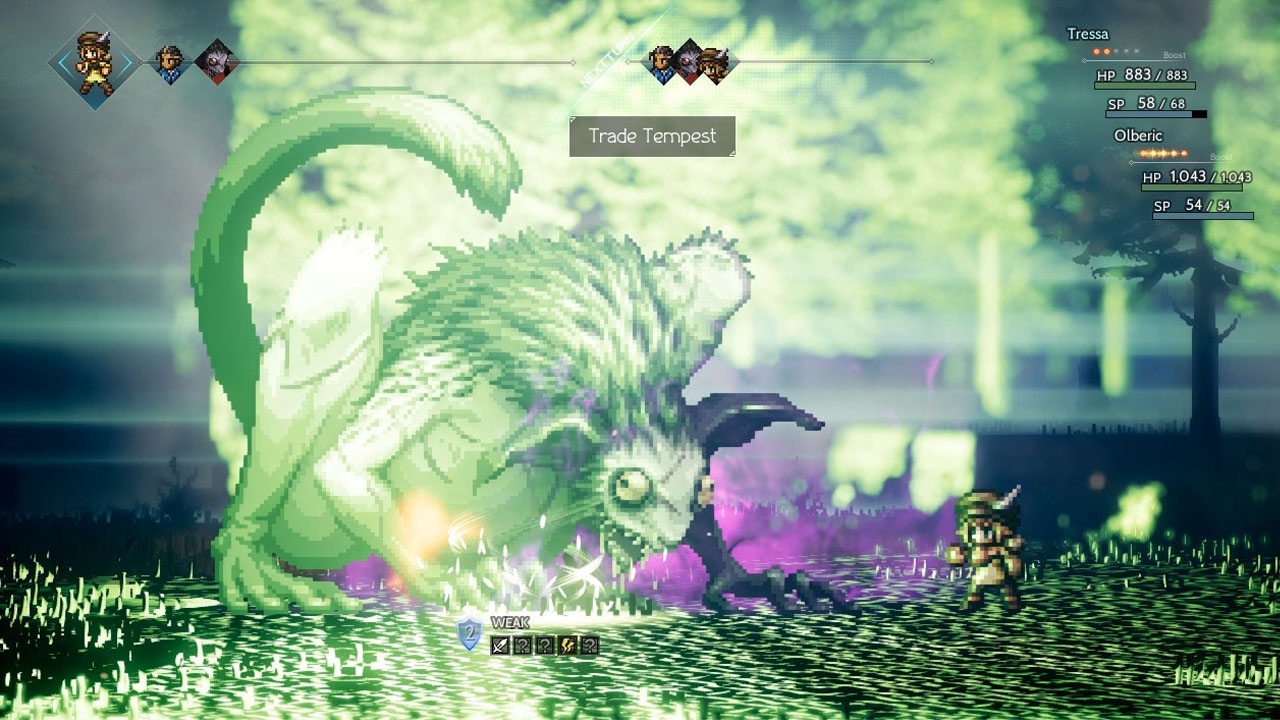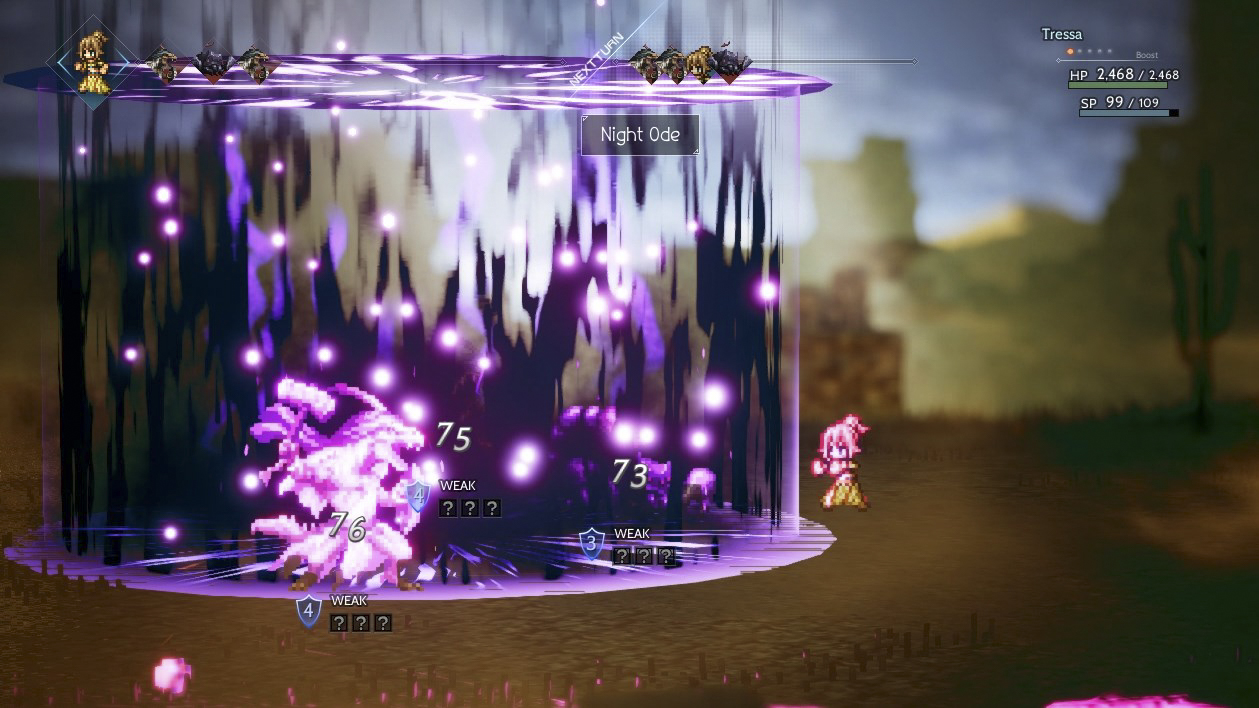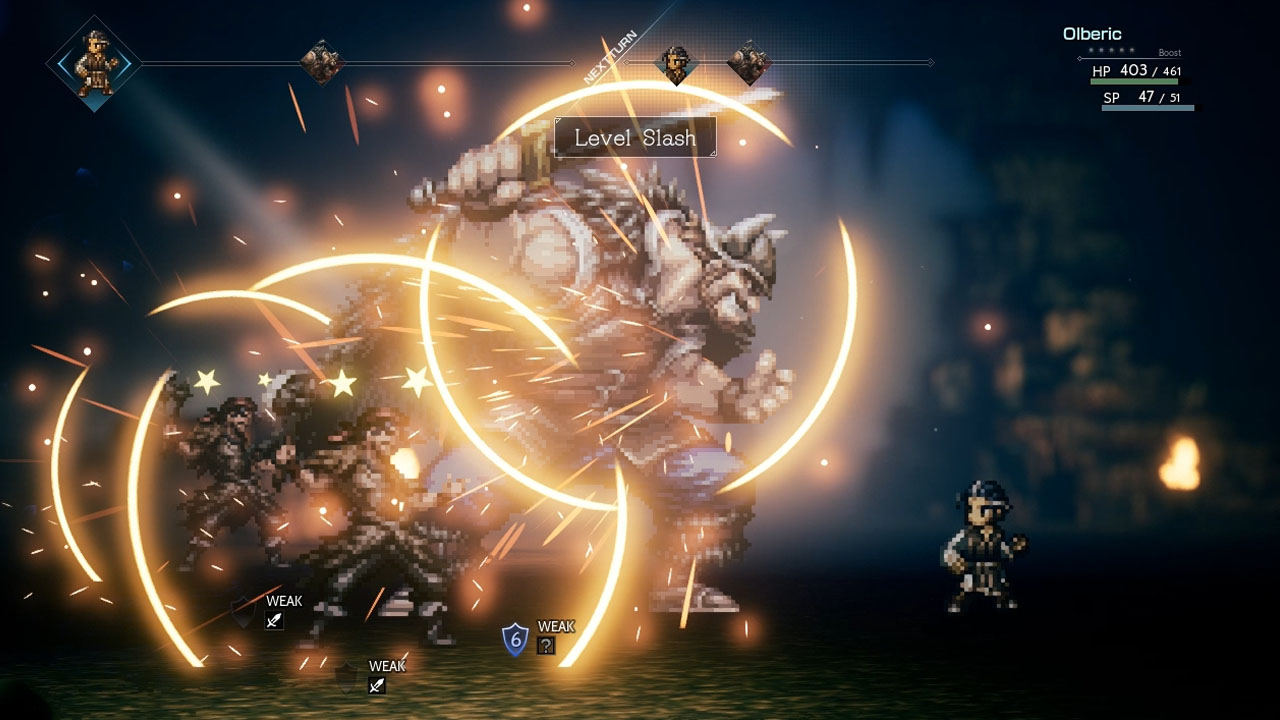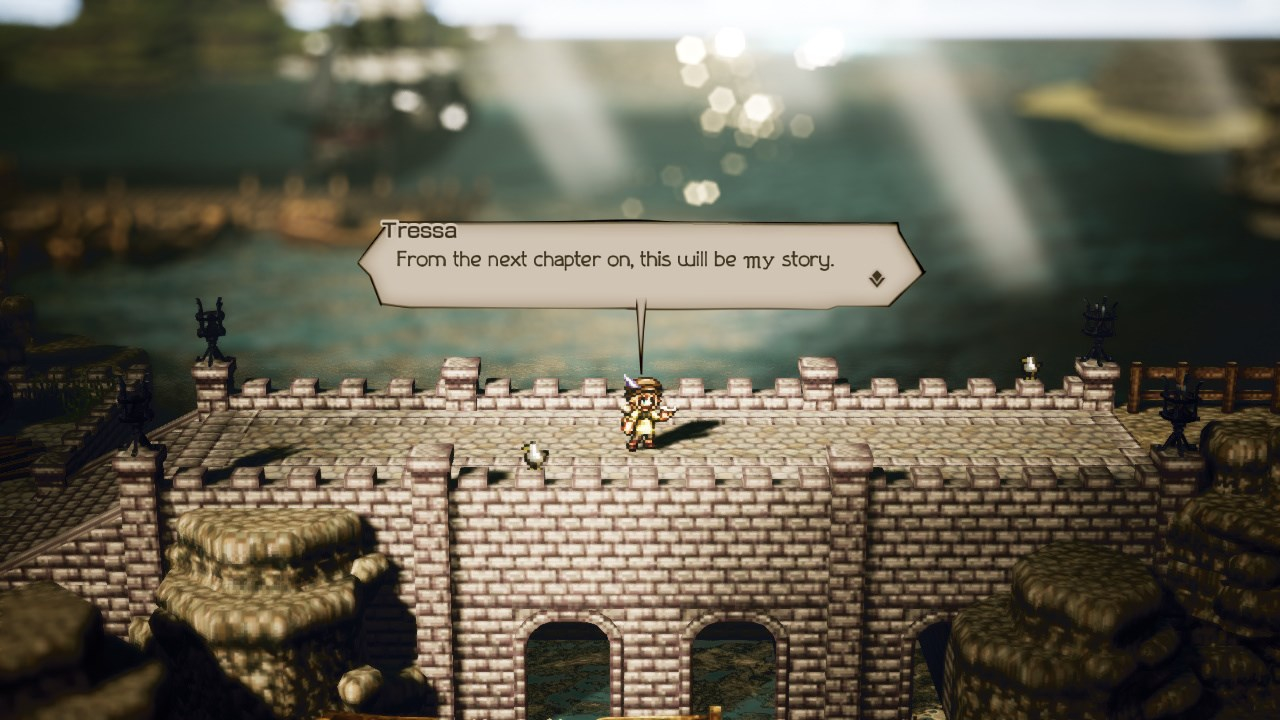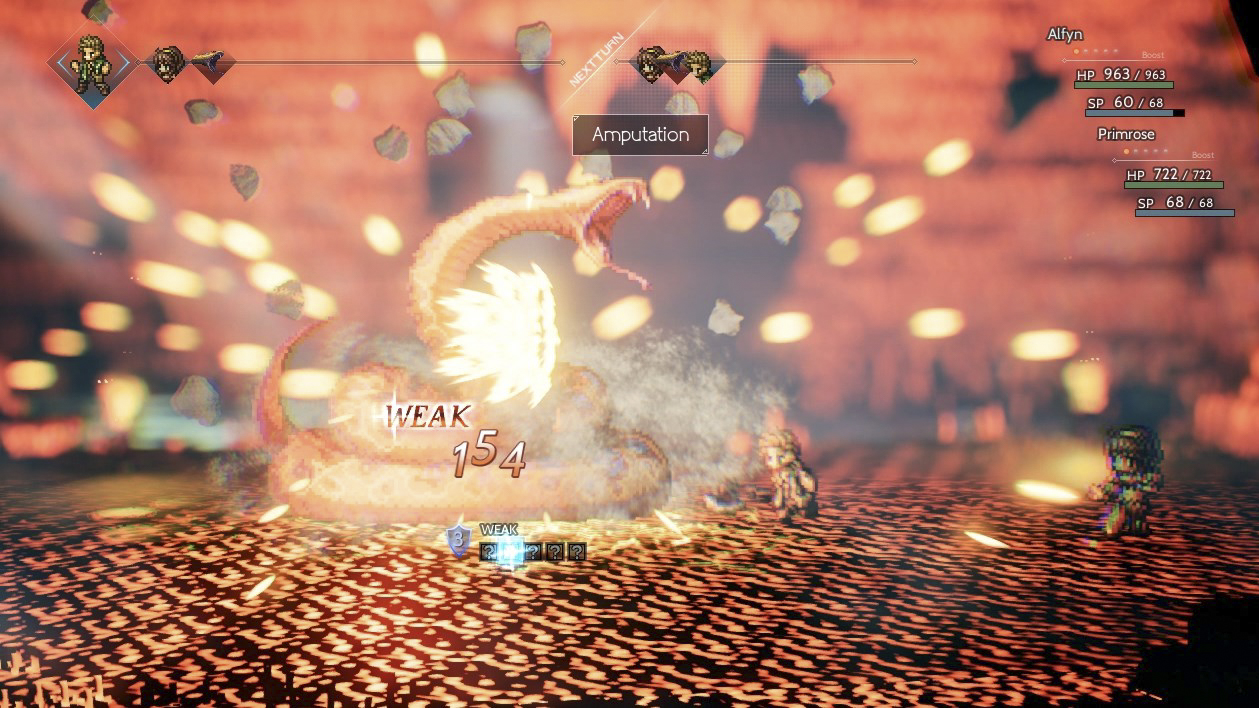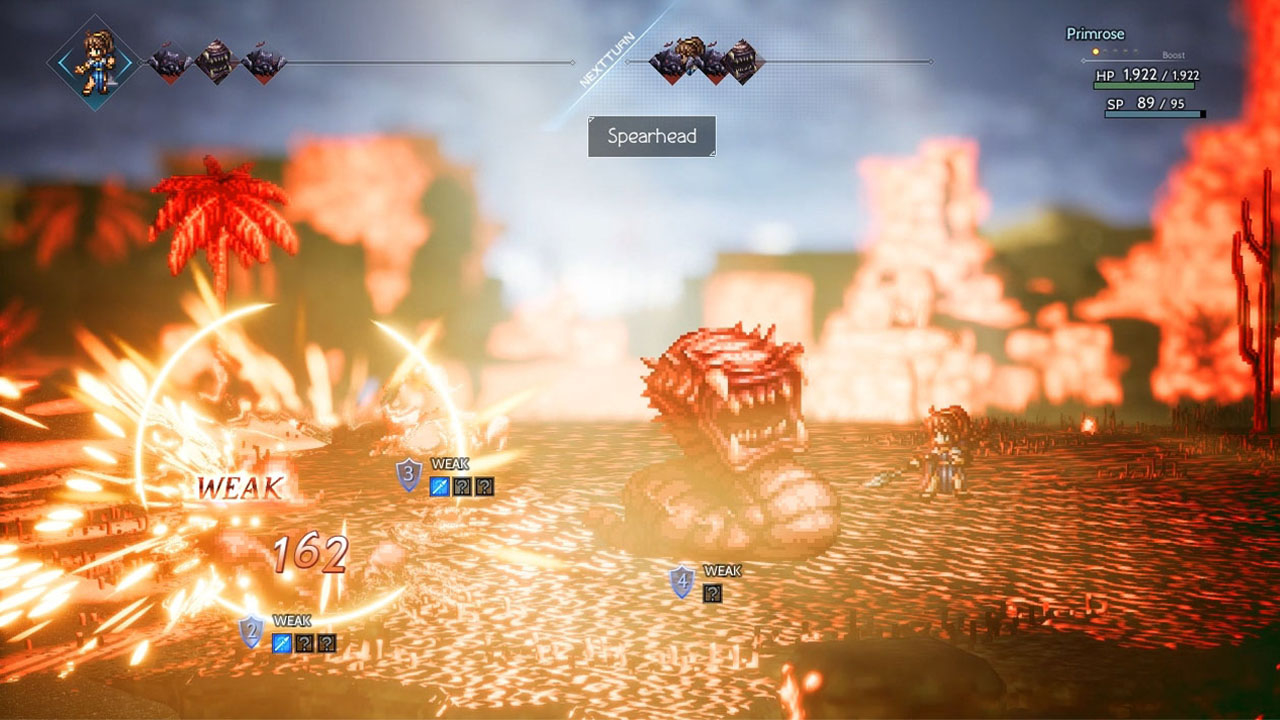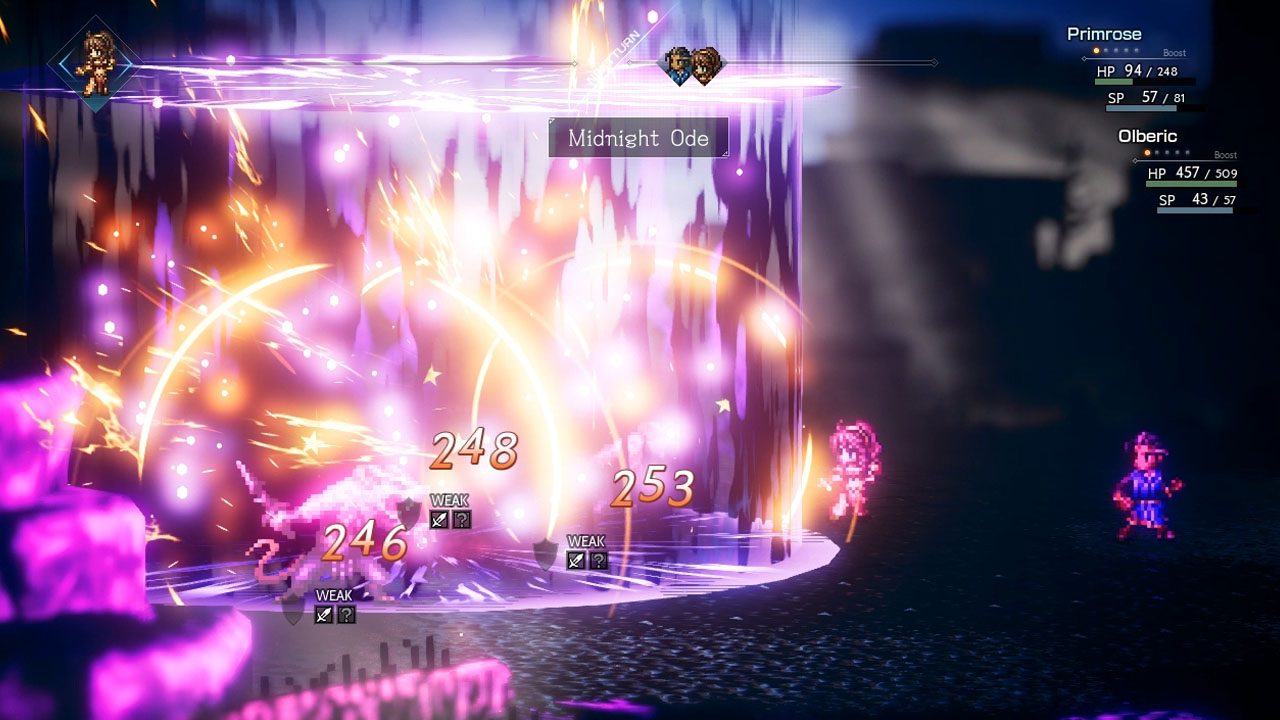Octopath Traveler made waves when it was announced last year. It tapped into nostalgia for old-school, turn-based JRPGs, but it mixed that with a beautiful art style and a unique narrative that promised to follow eight different characters from drastically different backgrounds. The game certainly delivers on the first promise – but the second, the story, falls short.
From the moment Nintendo revealed Octopath Traveler during its Nintendo Switch event in January 2017, the visuals stood out. Octopath’s graphics are sort of like a magic trick. They have the look of pixelated sprites, but also have a little something extra. Square has padded the pixels on top of low resolution polygons, giving them depth to achieve an “HD-2D” look.
Octopath Traveler’s combat system and presentation are top notch – which makes the story that much more disappointing.
That gives characters a bit of added detail and more animation possibilities, but it’s the environments that benefit the most. The world, towns, and dungeons are all rendered in 3D. Moving through them feels like flipping the pages of a popup book – and in fact, the special “Wayfarer’s Edition” comes with exactly that. From the deserts to snowcapped mountains to the dark and dreary dungeons, there’s gawk-worthy wonder in every direction.
Captivating visuals cannot propel a game to greatness alone but, once you settle in, Traveler offers a deep and enriching combat system. Although rooted in old-school, turn-based style, Square Enix adds a few fresh wrinkles that wind up being game changers. These include a long list of enemy weaknesses, which can only be discovered through fighting them, and a battle point system which, when used properly, lets you use a character for multiple attacks in a round.
Eight stories aren’t better than one
Octopath Traveler’s combat system and presentation are top notch – which makes the story more disappointing. As the game’s name suggests, you can follow the path of eight heroes. You begin with just one, a scholar, hunter, warrior, cleric, dancer, merchant, thief, or apothecary. After a short while, you’ll find yourself in an overworld where you’ll cross paths with the other heroes. Each time you approach a new main character, you can recruit them to your party. This triggers the beginning of their story and quest.
Yet none of the stories are connected, and even individually, they are underwhelming. Each character’s arc can be completed in a handful of hours, and since they aren’t part of a larger narrative, the game never builds to an epic, or even mundane, climax. Octopath Traveler instead tells eight quiet, humdrum yarns. And since you’re unlikely to finish one character’s arc from start to finish without recruiting others, the already forgettable plots are broken into fragments, removing any shred of momentum.
The game’s beautiful art and intriguing concept will make you want to pay attention to each story. Eventually, though, you’ll realize the narrative is all bread and no meat. Once that sinks in, you’ll have difficulty resisting the urge to skip through in-game dialogue.
Should you stick with these heroes and heroines for 50 hours just to see the sights and sounds? Is it worth grinding out battles and leveling up characters that are hard to care for? JPRG fans seeking a faithful and engaging spin on old-school, turn-based combat will say yes. If you expected more, though, you’ll toss aside your controller in disappointment within the few hours.
